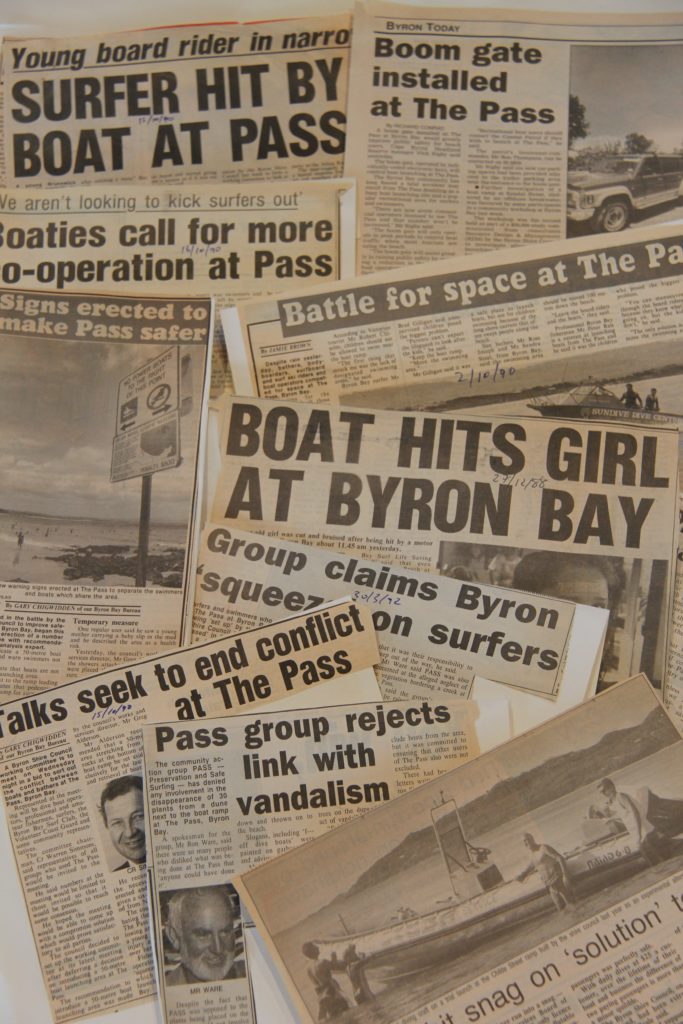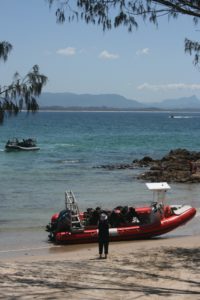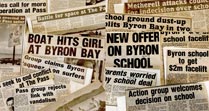
THESE days when the surf’s up and the crowds are huge, all the action is out in the line-up at The Pass at Byron Bay.
But there was a time in the late 1980s and early 1990s when there was more happening out of the water than in it at the world-famous surf break.
The community consultation process that led in late 2007 to new six-year licences being offered to the Byron Bay Dive Centre and Sundive and a cap set on the number of daily launches was a far cry from those turbulent days that became known as ‘Battle of The Pass’.
Those who were around in those days will recall the fiery exchanges between the various user groups.
The fight to get a parking spot at The Pass today when the surf’s up is nothing compared to the brawl between those groups.
A headline in The Northern Star in November 1991, said it all – ‘It’s war at The Pass’.
And it was. Passions ran high.
Involved in the ‘war’ were surfers and swimmers lined up against dive boat operators and fishermen who launched their boats there.
Also involved were Byron Council, Maritime Services Board and the Cape Byron Headland Reserve Trust. So it was a wide-reaching community fight.
Surfing groups and swimmers said the boats were a danger to them and should go, with boat users saying The Pass was the only safe place in the Bay to launch a boat.
Surfrider Foundation Australia became involved and a new group, Preservation and Safe Surfing – PASS – was formed to fight for surfers and swimmers.
There were emotional and packed public meetings on the issue and threats of sit-ins and court action.
There also was a serious search for a second ramp site in the town, without success.

In 1988, Leah Gudgeon, 12, the daughter of Holiday Let Organisation (HLO) spokesman, John Gudgeon, was cut and bruised after being hit by a boat trying to reach the beach in big seas.
Almost two years later, a young Brunswick Heads surfer, Ben Cooper, narrowly escaped serious injury when hit by a dive boat.
Byron Council called in a Sydney risk analyst expert. Warning signs were erected which council believed reduced its liability in the event of an accident.
In 1992 a management plan for The Pass was released which called for a restriction on dive boat movements and the introduction of a permit system for boat users.
As the ‘war’ progressed, a committee formed by the council comprising representatives from user groups was formed and charged with coming up with solutions to the problems at The Pass.
With views polarised, the committee couldn’t agree on much, although a voluntary code of practice for launching boats was eventually introduced.
However, in 1994, with changes to laws governing boats going to sea, launching at The Pass came under the regulatory control of the MSB Waterways Authority. It had the impact of giving the voluntary code of practice some teeth.
Boat users had to demonstrate to the trust they could safely launch their boats in the surf before they were allowed to use the ramp, a boom was installed at the top of the ramp and fees for commercial users were introduced.
Today, with the introduction of the Cape Byron Marine Park and the demise of professional fishing in the Bay, dive boat operators, who switched to inflatable craft some years ago, are the dominant boat users of The Pass.
That particular ‘war’ ended years ago and there have been no signs in recent times of the ‘peace’ collapsing.
But it can be a different story out in the surf.
